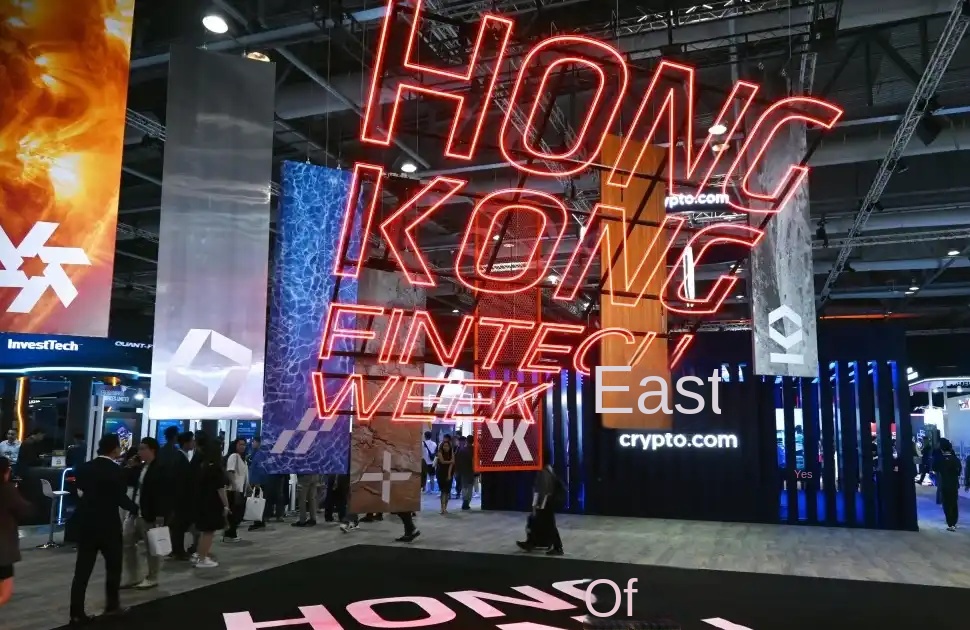Design and issuance of RWA products linked to coins and stocks
Original title: "RWA product design and issuance of coin-stock linkage"
Original author: Ye Kai (WeChat/Twitter: YekaiMeta)
As Web2.5, Hong Kong RWA is like Hong Kong stocks 20 years ago, equivalent to Crypto "Hong Kong stocks". For the old guns of Central Finance, it can be understood as Hong Kong stocks 3.0, or the tokenization of Hong Kong stock assets. The biggest similarity between Hong Kong RWA and Hong Kong stocks is that most of them are high-quality assets in the Mainland, and they are open to global funds.
Although the previous article "RWA model of coin-stock linkage" introduced the situation of coin-stock linkage of several Web3.0 concept and Bitcoin concept stocks, in general, Hong Kong listed companies have not yet fully found the way to the "RWA" model with virtual assets and Web3.0, and there is still a lot of room for imagination.
Web3 asset allocation and investment
The simplest RWA model of currency-stock linkage is that listed companies announce Web3.0 strategies to realize the linkage between traditional financial stocks and virtual assets. After listed companies allocate Bitcoin or invest in related Web3.0 compliance projects, the company's stocks are linked with the investment allocation of virtual assets and the layout of Web3. While the price or value of virtual assets mainly Bitcoin continues to rise, the value of listed companies' stocks in the real world also doubles. This kind of linkage growth is often a premium or doubled.
For listed companies, the simplest first step is to allocate Bitcoin or entrust the allocation of Bitcoin assets, so that the listed company's balance sheet has floating assets. The second step is to combine the main business or related layout of Web3.0 investment and construction, and promote the rise of listed company stocks through the increase of Web3.0 traffic and token value.
Hong Kong Stock Bonds and RWA Bonds
Hong Kong finance has a rich channel and ecosystem around Hong Kong-listed companies. The fundraising, investment, management and exit of an asset-packed listed company are very mature, even on the table and under the table. The investment banking business, distribution channels and PI customers of Hong Kong-funded securities firms are basically centered around listed companies.
The bonds of listed companies can be corporate bonds of listed companies or convertible bonds (a combination of bonds and stocks). The issuance system is simple, the issuance and guarantee structure are convenient, and the convertible bond market is traded.
RWA bonds use high-quality assets or high-quality corporate bonds in the mainland through red chip structures and SPV companies similar to Hong Kong-listed companies to issue corporate bond funds, and then tokenize and issue them as RWA projects.
RWA equity NFTs can also be issued based on the endorsement of listed companies, and the liquidity pool of SPV company's cash flow NFTs; if yield Tokens are derived based on the underlying assets of RWA, you can airdrop yield Tokens to RWA NFTs, or airdrop listed company stocks at the same time.
These can benefit listed companies in emerging fields with large revenue and transaction flows, such as live film and television, pharmaceutical and biological health, green energy, AI computing power, interactive games, commodities or durable goods, etc., and can achieve value growth through RWA token premiums and cash flow without considering the traditional price-earnings ratio model.
Regarding the supervision of Hong Kong stocks and RWA, for specific projects, the SFC regulatory requirements are currently case by case, and then look at whether it is a simple or complex product design. For those endorsed by listed companies and supported by convertible bonds and stock options, it is suitable to design simple corporate bonds. Through the bonds or funds of listed companies, the core of tokenization is to work with long-term securities firms to issue and underwrite; and in the past, conventional operations of Hong Kong stocks, such as additional issuance and allotment, RWA bonds can also be issued and split, and the financial Lego around corporate financing is actually very similar.
The design of complex STO/RWA will be based on a certain asset package or income right of a listed company, and ABS or REIT-like design will be carried out, but because complex RWA products will be more strictly regulated, especially when turning to the retail market, it is not recommended to make similar designs in the early stages.
Hong Kong-listed companies still need to do some preparation work, such as opening an account and PI certification in a licensed and compliant exchange, which is still quite troublesome at present, such as the penetration of actual controllers and shareholders, etc. Our funds and listed companies have been tortured for a long time in the certification and account opening.
At the same time, considering that in the structural design, there may be a second layer of token design above the compliant RWA assets, so it is also necessary to make use of the international station or offshore's alternative investments to prepare for account opening, TGE, etc.
Web3.0's encrypted Hong Kong stock airdrop model
Previous articles discussed "licensed and compliant to the right, retail tokens to the left", which is actually the left and right classification of RWA exchanges. Licensed and compliant exchanges are similar to H's Hong Kong station, and alternative investment exchanges are similar to H's international station or offshore's RWA exchange (not the current native cryptocurrency exchange).
Hong Kong Station, compliant securities products, facing different users, mainly Hong Kong's PI and compliant retail investors;
International station, non-securities RWA tokens, for global Crypto users who are interested in the RWA track or novice users who have converted from the traditional financial market;
From the perspective of global capital trends, high-quality corporate bonds, fixed-income products, equity private placements, etc. will become the mainstream products of RWA.
The target user groups of RWA tokens and Hong Kong stocks are different, and the ecology is overlapping and different. Many ways of playing Hong Kong stocks can actually be inherited and innovated in Web3.0 and RWA tokenization. For example, consumption can send stocks, and RWA projects can recharge and send RWA tokens; for example, RWA token issuance, purchase of RWA tokens, airdrop (giveaway) of listed company stocks (physical financial assets, which can be restricted paper ticket custody), etc.
Some unique ways of playing Web3.0 can also reflect the difference between RWA and Hong Kong stocks. For example, by learning from the airdrop gameplay of Runes and Runestone, fairplay can be achieved for community retail investors in the early stage, and retail investors can counterattack institutional clients.
No matter how it is played, the key is that people in Central Finance and Hong Kong stocks and people in Web3.0 crypto finance can move towards each other and realize the landing and development of RWA on the moderate track of Web2.5.
This article comes from a contribution and does not represent the views of BlockBeats.
Welcome to join the official BlockBeats community:
Telegram Subscription Group: https://t.me/theblockbeats
Telegram Discussion Group: https://t.me/BlockBeats_App
Official Twitter Account: https://twitter.com/BlockBeatsAsia


 Forum
Forum Finance
Finance
 Specials
Specials
 On-chain Eco
On-chain Eco
 Entry
Entry
 Podcasts
Podcasts
 Activities
Activities
 OPRR
OPRR









